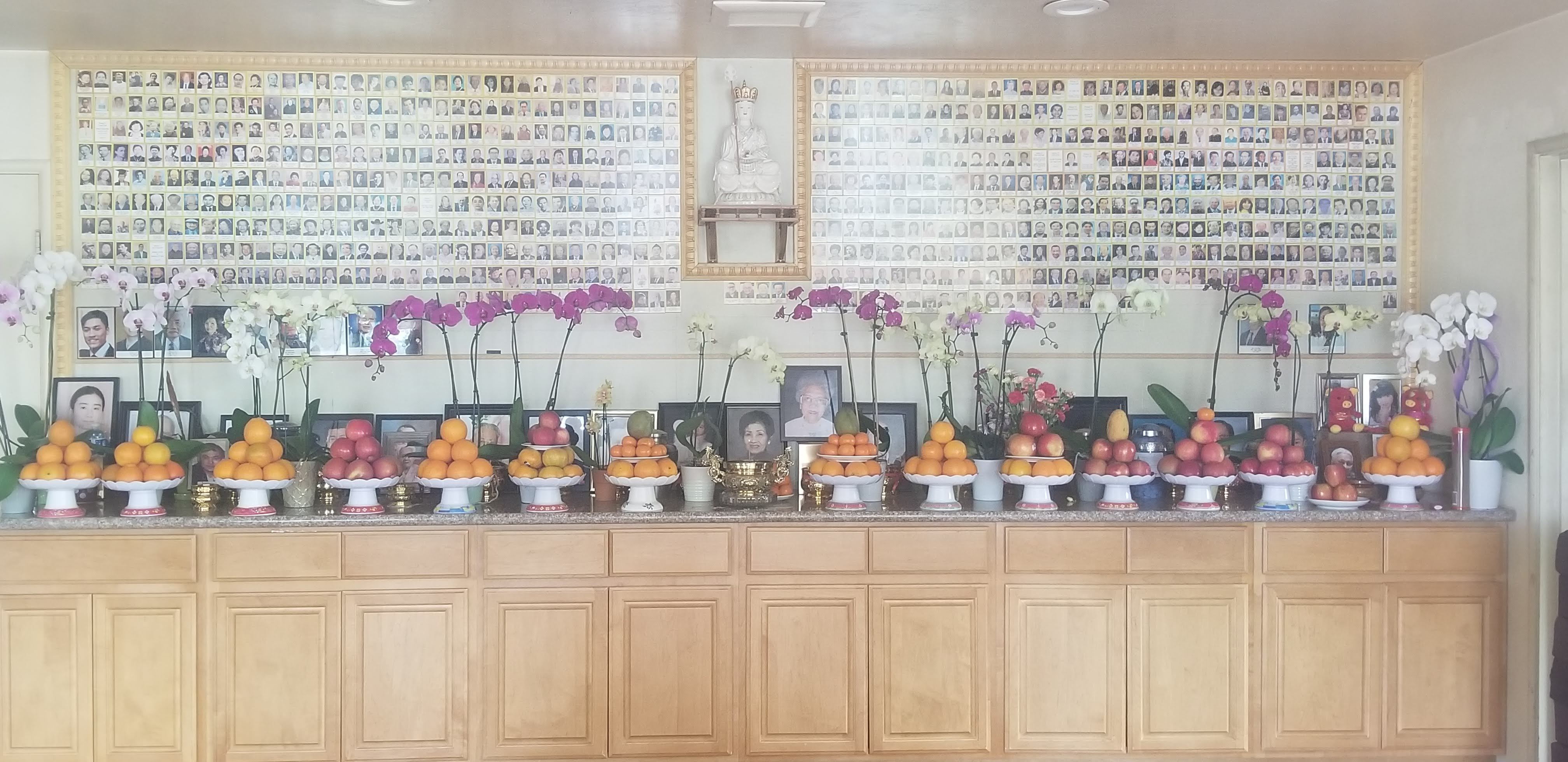Affective Dissonance
The first identifiable friction is what Dickinson, Ott, and Aoki would describe as affective dissonance. They identify affective dissonance as when “the body [is] in a transitory state of dissension” (27). They used the Whitney Gallery of Western Art as an example of affective dissonance because it "suggests the West is a diverse and often discordant set of ideas and images. But it also suggests the West is a place where these dissonances can be resolved and harmonized” (Dickinson et al 31).
Affective dissonance is most obvious when examining how the Tu Lam temple's identity as a temple and Vietnamese cultural space come into contact. Year round, there are people honoring their deceased loved ones as seen in the second image to the left. The monk puts up pictures of the deceased so that they are remembered. However, when it is the Lunar New Years, the temple becomes more festive and there are a lot of decorations put up to welcome in the Lunar New Year as seen in the first image to the left. This celebratory practice occurs while the deceased are still being honored. Whereas traditional cemetaries maintain a serious atmosphere for mourning, the Tu Lam temple's atmosphere is influenced by the time year while still maintaining its Buddhist practices of honoring the deceased. This friction does not necessarily detract from the temple's rhetorical effectiveness because it fits the audience's expectations of how the temple should look around Lunar New Years. It would be actually be stranger for the temple to not celebrate Lunar New Years because the audience's intersectionality as Vietnamese Buddhists would expect the temple to adhere to Vietnamese cultural norms. Therefore, even though it is strange to imagine people celebrating and then immediately honoring the deceased, this practice by the temple is actually quite fitting because temple is more accurately reflecting the audience's intersectional identities.
The third image is a screenshot of the temple's 990 tax form which each non-profit organization is required by the United States government to fulfill. In the screenshot is the temple having to identify as a church to qualify for public charity status. Courtney Bruntz describes how Buddhist temples in the United States typically have to "translate their religious identity into Christrian frameworks" (Bruntz 64). The Tu Lam temple having to identify as a church to the United States government is an example how the temple has to express their identity within a Christrian framework. This reflects how the temple's audience are typically refugees from Vietnam who after immigrating to the United States has to express their identity within an American framework. The temple is not exempt from this because of its recursive relationship with its audience where continously enact upon eachother to fulfill their identities within Buddhism and Vietnamese cultural practices.


